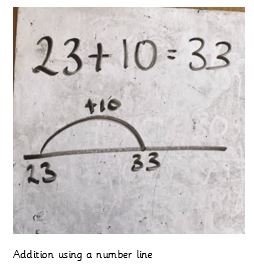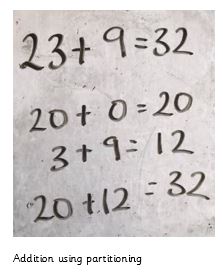Year 1 & 2 Week 2 8th June
.jpg)
Big Talk
Have a look at the picture below and talk about the questions underneath.

Which animal would be suited to working in the health clinic?
Can you give suggestions as to the occupations of the other animals in the picture?
If you could have any job, what would it be and why?
If you could be any animal, what would it be and why?
What problems might they encounter in Animal Town that humans don’t encounter in human towns?
Are there any similar problems that both animals and humans experience?
Would animals be better off without humans? Would humans be better off without animals?
Can you draw a picture of what a scene looks like in the supermarket in Animal Town?
These sentences are ‘sick’ and need help to get better. Can you help? Can you add exciting adjectives to make them more interesting? Here's an example- A huge, ferocious lion sat proudly on the green van.
A lion sat on the van. A giraffe put his head out through the window. The zebra walked across the road.
Phonics
Year 1
This week we would like you to read through the words at the bottom of the blog- Year 1 Phonics. Can you add the sound buttons?
Year 2
This week we would like you to copy out the sentences below and correct the spellings.
Maths Addition
Year 1
Before you start watch this video...https://www.youtube.com/watch?v=JmLHy1TwCCQ
There are lots of ways you can help your child to understand addition. Here are just a few ideas:
1. Play the Number Facts Pairs game
Your child needs to know a range of number facts involving addition and subtraction. Number facts are facts that we know immediately, without the need to calculate, like 2 + 2 = 4.
For instance, it is very important for your child’s future learning that they are able to recall the different ways we can partition (break apart) numbers from 1–10. You can help them learn by playing Number Facts Pairs together!
- Write out the numbers 1 to 10 two times, making 20 separate number cards.
- Turn the cards face down and pick one at random. This is the number you are going to try to make.
- Now, take it in turns to pick up cards. Add each card you pick up together until you get to the target number. If you go too high, you can use your turn to put back one of the cards you have picked up, face down.
- When a player reaches the target number, they win!
There are lots of fun variations of the game you could try. Why not add in higher numbers, or see how many targets you can reach within two minutes?
2. Play dice games
There are lots of ways you can encourage your child to solve addition problems practically – all you need are two dice.
In school, they will be taught that addition is when we add two groups of objects together or when we have an amount to start with and then add more to it, making the total increase. You could play a game where each player rolls two dice and has to find the total. The winner is the player who has the largest total.
Why not play board games with two dice? These offer a great opportunity to practise number bonds, as well as teaching other useful skills like counting and waiting for their turn.
3. Focus on counting on
Help your child practise addition by combining two or more sets of objects. For example, if you have 4 grapes and your child has 7 grapes, ask them to find out how many grapes there are in total. Your child may count each grape one at a time to find the total amount.
To ensure that they count each grape accurately, it might be a good idea to ask your child to place the grapes in a row. Your child may be able to begin solving addition by ‘counting on’. In this method, the child could start with the 4 grapes and then count on 7 more to find the total, i.e. 5, 6, 7, 8, 9, 10, 11. You could then support your child to record what they have done using symbols, i.e. 4 + 7 = 11.
If your child likes collecting stickers, ask them how many they have already. Then ask them how many they would have if you gave them 2 more. This will encourage them to begin ‘counting on’ from the original amount to solve the addition problem, which is much quicker than counting every sticker!
There are some number line addition sheets at the bottom of the log if your child is confident at adding amount together. To make a number sentence us the number cards sent home at pick two at random. Start with 1 digit numers ( 3 + 6 =) and then gradually introduce 2 digit numbers up to 20 and then higher.
Year 2
In year 2 we have learnt lots of methods for addition in year 2. Your child can choose which method they prefer. When completing addition they should start with…
1. 2 digit numbers + 1 digit number not crossing 10 ( 23 + 6 = )
2. 2 digit number + 10s (23 + 10 =)
3. 2 digit number + 2 digit number where the ones do not cross 10 ( 23 + 14 = )
4. 2 digit + 1 digit where the ones add up to more than 10 ( 23 + 9 = )
5. 2 digit + 2 digit where the ones add up to more than 10 ( 23 + 36 = )
Children can choose any method they want and can also use all three. Some children will still need to use concrete resources to help them and the best method to use for this is a place value chart. When they are confident at completing addition number sentences either using concrete resources of pictorially then they should have a go at some of the challenges at the bottom on the blog or these...
Challenge 1
Story problems can be a fun way to help your child understand addition. And you can have fun making them up! Why not see if your child would like to create a story problem for you?
When creating an addition story problem, you could support your child by giving them objects to use or a picture to inspire their story. Once they’ve completed the word problem, ask them if they could write the calculations in the problem using symbols (‘+’ and ‘=’).
Here’s an example. I have 12 stickers. My friend has 15 stickers. My brother has 14 stickers. How many do we have altogether?
12 + 15 + 14 =
Challenge 2
English/Science The Life Cycle of a Butterfly
This week we would like you to learn about the life cycle of a butterfly. Below is a power point and poster you can read through to learn about the life cycle and here are some videos you could watch…
https://www.youtube.com/watch?v=WVAEoPC_hUU
https://www.youtube.com/watch?v=jivWeOrCaeI
Now you could…
Draw pictures to show the life cycle of a butterfly and label it
Create a poster about the life cycle of a butterfly
Write sentences to describe the life cycle of a butterfly using time words- first, next, then, finally
Learn how to draw a butterfly (instructions below)
Complete a reading comprehension
Create some butterfly crafts (see instructions below) and then write about your craft
Read the story The Very Hungry Caterpillar or watch the video https://www.youtube.com/watch?v=75NQK-Sm1YY
Write a story about the life cycle of a caterpillar using facts and key words you have learnt (such as caterpillar, butterfly, chrysalis etc.) It could be a version of The Very Hungry Caterpillar using different food or a completely different story.
Can you learn about the life cycle of other creatures?
PE
https://www.youtube.com/watch?v=xhWDiQRrC1Y
This week why not have a look at Cosmic Yoga. They do some great short videos and there's even one based on the story The Very Hungry Caterpillar- just click the link above.
Science
This week is all about understanding how a plant grows from a seed to a plant. Remember to email Mrs Ellis on rellis37ru@nsix.org.uk if you need your log in information for Developing Experts. This week the activity it to make a diorama (a 3D model) of a plant life cycle.
The Science Behind the Science
Seeds wait to germinate until three needs are met: water, correct temperature (warmth), and a good location (such as in soil). During its early stages of growth, the seedling relies upon the food supplies stored within the seed, until it is large enough for its own leaves to begin making food through photosynthesis.
There is also a power point to have a read through as well at the bottom of the blog.
Topic Henry Moore
This week we would like you to have a look at the work of the famous British sculpture Henry Moore. Follow this link to find out more… https://www.tate.org.uk/kids/explore/who-is/who-henry-moore
This week we would like you to learn about Henry Moore. Have a look at some of his work and think about the questions below. Then create a sculpture of yourself or a family member using either clay, play dough or salt dough. There are some recipes at the bottom of the blog. You could even create a fact file about his life.
Music
As a school we have registered for Norfolk Music Hub's Virtual Big Sing this year. It takes place on Friday 19th June at 2pm and is replayed on Sunday 21st June at 2pm for anyone who wants to watch again or has missed it. It will be like a concert that we can sing along with. There is more information about what the Virtual Big Sing is here. https://www.norfolkmusichub.org.uk/site/vbs-2020/
The Music Hub are just starting to publish who the artists we will be performing alongside are. So far, they've announced that the vocal leader is Mark de Lisser (he's a gospel choir leader and arranged the version of 'Stand by Me' sung at Harry and Meghan's wedding), and the vocal performers are Nicola Roberts (Girls Aloud), Jessie J and The Kingdom Choir. If you take a look at their facebook page https://www.facebook.com/NorfolkMusicServiceyou can see some videos of each artist saying how excited they are to be involved.
It would be great if you could practise the songs at home if you want to take part. You can access the music by logging in to Charanga https://charanga.com/site/
Our username is 145369 and our password is elephant.
Then click on the Sing tab at the top.Look at the right hand side of the page where you will see the Virtual Big Sing logo. Click on this and it will take you to the resources. Once on the resources page, you need to click Launch Virtual Big Sing. Then, on the right hand side, all the songs are available that we need to have a go at. You don't have to learn them all. Why not start with Over the Rainbow?





















